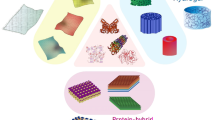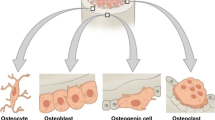Abstract
Bone defect is one of the most common diseases in clinic. Existing therapeutic approaches have encountered many problems, such as lack of autogenous allogeneic bone and immunological rejection to allogeneic implant. Synthetic hydroxyapatite (HA) provided solutions for bone repair, since the HA is the main inorganic component of animals’ bone. However, HA has good biocompatibility, but does not possess osteogenic capability, which is of significance for modern bone repair materials. Si is an essential trace element in bone tissue, and it has been demonstrated to be able to promote bone formation. Therefore, silicate-doped hydroxyapatite (Si-HA) may serve as a promising material for bone repair, and promote bone regeneration in the repair. The current review discusses development of Si-HA, focusing on its preparation and characterization, in vitro and in vivo evaluations of the material, positive effect of Si-HA on promoting bone formation in clinical applications, and molecular mechanism investigation of such promotive effect.
Similar content being viewed by others
References
McConnell D, Frajola W J, Deamer D W. Relation between the inorganic chemistry and biochemistry of bone mineralization. Science, 1961, 133(3448): 281–282
Posner A S. The mineral of bone. Clinical Orthopaedics and Related Research, 1985, 200(200): 87–99
Liao S S, Cui F Z, Zhang W, et al. Hierarchically biomimetic bone scaffold materials: nano-HA/collagen/PLA composite. Journal of Biomedical Materials Research Part B: Applied Biomaterials, 2004, 69(2): 158–165
Philipson B. Composition of cement lines in bone. Journal of Histochemistry and Cytochemistry, 1965, 13(4): 270–281
Hendricks S B, Hill W L. The nature of bone and phosphate rock. Proceedings of the National Academy of Sciences of the United States of America, 1950, 36(12): 731–737
Levitt S R, Crayton P H, Monroe E A, et al. Forming method for apatite prostheses. Journal of Biomedical Materials Research, 1969, 3(4): 683–684
Perloff A, Posner A S. Preparation of pure hydroxyapatite crystals. Science, 1956, 124(3222): 583–584
McCann H G. Reactions of fluoride ion with hydroxyapatite. Journal of Biological Chemistry, 1953, 201(1): 247–259
Kay M I, Young R A, Posner A S. Crystal structure of hydroxyapatite. Nature, 1964, 204(4963): 1050–1052
Sudarsanan K, Young R A. Significant precision in crystal structural details. Holly Springs hydroxyapatite. Acta Crystallographica Section B: Structural Crystallography and Crystal Chemistry, 1969, 25(8): 1534–1543
Qiu Z Y, Li G, Zhang Y Q, et al. Fine structure analysis and sintering properties of Si-doped hydroxyapatite. Biomedical Materials, 2012, 7(4): 045009
Wang J, Yang Q, Mao C, et al. Osteogenic differentiation of bone marrow mesenchymal stem cells on the collagen/silk fibroin bitemplate-induced biomimetic bone substitutes. Journal of Biomedical Materials Research Part A, 2012, 100A(11): 2929–2938
Wang Y, Ma J, Zhou L, et al. Dual functional selenium-substituted hydroxyapatite. Interface Focus, 2012, 2(3): 378–386
Chen C, Qiu Z Y, Zhang S M, et al. Biomimetic fibronectin/mineral and osteogenic growth peptide/mineral composites synthesized on calcium phosphate thin films. Chemical Communications, 2011, 47(39): 11056–11058
Tang Z-B, Cao J-K, Wen N, et al. Posterolateral spinal fusion with nano-hydroxyapatite-collagen/PLA composite and autologous adipose-derived mesenchymal stem cells in a rabbit model. Journal of Tissue Engineering and Regenerative Medicine, 2012, 6(4): 325–336
Zhang C, Hu Y Y, Cui F Z, et al. A study on a tissue-engineered bone using rhBMP-2 induced periosteal cells with a porous nanohydroxyapatite/collagen/poly(L-lactic acid) scaffold. Biomedical Materials, 2006, 1(2): 56–62
Tram Do T N, Lee W-H, Loo C-Y, et al. Hydroxyapatite nanoparticles as vectors for gene delivery. Therapeutic Delivery, 2012, 3(5): 623–632
Guo Y-P, Guo L-H, Yao Y-B, et al. Magnetic mesoporous carbonated hydroxyapatite microspheres with hierarchical nanostructure for drug delivery systems. Chemical Communications, 2011, 47(44): 12215–12217
Ito A, Otsuka M, Kawamura H, et al. Zinc-containing tricalcium phosphate and related materials for promoting bone formation. Current Applied Physics, 2005, 5(5): 402–406
Ito A, Kawamura H, Otsuka M, et al. Zinc-releasing calcium phosphate for stimulating bone formation. Materials Science and Engineering C, 2002, 22(1): 21–25
Grandjean-Laquerriere A, Laquerriere P, Jallot E, et al. Influence of the zinc concentration of sol-gel derived zinc substituted hydroxyapatite on cytokine production by human monocytes in vitro. Biomaterials, 2006, 27(17): 3195–3200
Velard F, Laurent-Maquin D, Braux J, et al. The effect of zinc on hydroxyapatite-mediated activation of human polymorphonuclear neutrophils and bone implant-associated acute inflammation. Biomaterials, 2010, 31(8): 2001–2009
Nielsen F H. Ultratrace elements in nutrition. Annual Review of Nutrition, 1984, 4(1): 21–41
Carlisle E M. Silicon: a possible factor in bone calcification. Science, 1970, 167(3916): 279–280
Carlisle E M. A relationship between silicon and calcium in bone formation. Federation Proceedings, 1970, 29: 565
Carlisle E M, Garvey D L. The effect of silicon on formation of extracellular matrix components by chondrocytes in culture. Federation Proceedings, 1982, 41: 461
Carlisle E M. Silicon: an essential element for the chick. Science, 1972, 178(4061): 619–621
Schwarz K, Milne D B. Growth-promoting effects of silicon in rats. Nature, 1972, 239(5371): 333–334
Gibson I R, Best S M, Bonfield W. Chemical characterization of silicon-substituted hydroxyapatite. Journal of Biomedical Materials Research, 1999, 44(4): 422–428
Arcos D, Rodríguez-Carvajal J, Vallet-Regí M. Silicon incorporation in hydroxylapatite obtained by controlled crystallization. Chemistry of Materials, 2004, 16(11): 2300–2308
Tian T, Jiang D, Zhang J, et al. Synthesis of Si-substituted hydroxyapatite by a wet mechanochemical method. Materials Science and Engineering C, 2008, 28(1): 57–63
Gibson I R, Best SM, Bonfield W. Effect of silicon substitution on the sintering and microstructure of hydroxyapatite. Journal of the American Ceramic Society, 2002, 85(11): 2771–2777
Tang X L, Xiao X F, Liu R F. Structural characterization of silicon-substituted hydroxyapatite synthesized by a hydrothermal method. Materials Letters, 2005, 59(29-30): 3841–3846
Leventouri T, Bunaciu C E, Perdikatsis V. Neutron powder diffraction studies of silicon-substituted hydroxyapatite. Biomaterials, 2003, 24(23): 4205–4211
Palard M, Champion E, Foucaud S. Synthesis of silicated hydroxyapatite Ca10(PO4)6 − x (SiO4)x(OH)2 − x . Journal of Solid State Chemistry, 2008, 181(8): 1950–1960
Porter A E, Best S M, Bonfield W. Ultrastructural comparison of hydroxyapatite and silicon-substituted hydroxyapatite for biomedical applications. Journal of Biomedical Materials Research Part A, 2004, 68(1): 133–141
Botelho C M, Lopes M A, Gibson I R, et al. Structural analysis of Si-substituted hydroxyapatite: zeta potential and X-ray photoelectron spectroscopy. Journal of Materials Science: Materials in Medicine, 2002, 13(12): 1123–1127
Palard M, Combes J, Champion E, et al. Effect of silicon content on the sintering and biological behaviour of Ca10(PO4)6 − x (SiO4)x(OH)2 − x ceramics. Acta Biomaterialia, 2009, 5(4): 1223–1232
Botelho C M, Brooks R A, Best S M, et al. Human osteoblast response to silicon-substituted hydroxyapatite. Journal of Biomedical Materials Research Part A, 2006, 79A(3): 723–730
Zhang E, Zou C, Yu G. Surface microstructure and cell biocompatibility of silicon-substituted hydroxyapatite coating on titanium substrate prepared by a biomimetic process. Materials Science and Engineering C, 2009, 29(1): 298–305
Gomes P S, Botelho C, Lopes M A, et al. Evaluation of human osteoblastic cell response to plasma-sprayed silicon-substituted hydroxyapatite coatings over titanium substrates. Journal of Biomedical Materials Research Part B: Applied Biomaterials, 2010, 94(2): 337–346
Balamurugan A, Rebelo A H, Lemos A F, et al. Suitability evaluation of sol-gel derived Si-substituted hydroxyapatite for dental and maxillofacial applications through in vitro osteoblasts response. Dental Materials, 2008, 24(10): 1374–1380
Kokubo T, Takadama H. How useful is SBF in predicting in vivo bone bioactivity? Biomaterials, 2006, 27(15): 2907–2915
Eraković S, Janković A, Veljović D, et al. Corrosion stability and bioactivity in simulated body fluid of silver/hydroxyapatite and silver/hydroxyapatite/lignin coatings on titanium obtained by electrophoretic deposition. The Journal of Physical Chemistry B, 2012, doi: 10.1021/jp305252a
Heinemann S, Heinemann C, Wenisch S, et al. Calcium phosphate phases integrated in silica/collagen nanocomposite xerogels enhance the bioactivity and ultimately manipulate the osteoblast/osteoclast ratio in a human co-culture model. Acta Biomaterialia, 2013, 9(1): 4878–4888
Balas F, Pérez-Pariente J, Vallet-Regí M. In vitro bioactivity of silicon-substituted hydroxyapatites. Journal of Biomedical Materials Research Part A, 2003, 66(2): 364–375
Hing K A, Revell P A, Smith N, et al. Effect of silicon level on rate, quality and progression of bone healing within silicate-substituted porous hydroxyapatite scaffolds. Biomaterials, 2006, 27(29): 5014–5026
Porter A E, Patel N, Skepper J N, et al. Effect of sintered silicate-substituted hydroxyapatite on remodelling processes at the boneimplant interface. Biomaterials, 2004, 25(16): 3303–3314
Jenis L G, Banco R J. Efficacy of silicate-substituted calcium phosphate ceramic in posterolateral instrumented lumbar fusion. Spine, 2010, 35(20): E1058–E1063
Nagineni V V, James A R, Alimi M, et al. Silicate-substituted calcium phosphate ceramic bone graft replacement for spinal fusion procedures. Spine, 2012, 37(20): E1264–E1272
Kirschner H J, Obermayr F, Schaefer J, et al. Treatment of benign bone defects in children with silicate-substituted calcium phosphate (SiCaP). European Journal of Pediatric Surgery, 2012, 22 (2): 143–147
Porter A E, Botelho C M, Lopes M A, et al. Ultrastructural comparison of dissolution and apatite precipitation on hydroxyapatite and silicon-substituted hydroxyapatite in vitro and in vivo. Journal of Biomedical Materials Research Part A, 2004, 69 (4): 670–679
Porter A E, Best S M, Bonfield W. Ultrastructural comparison of hydroxyapatite and silicon-substituted hydroxyapatite for biomedical applications. Journal of Biomedical Materials Research Part A, 2004, 68(1): 133–141
Porter A E, Patel N, Skepper J N, et al. Comparison of in vivo dissolution processes in hydroxyapatite and silicon-substituted hydroxyapatite bioceramics. Biomaterials, 2003, 24(25): 4609–4620
Birchall J D, Espie AW. Biological implications of the interaction (via silanol groups) of silicon with metal ions. Ciba Foundation Symposium, 1986, 121: 140–159
Gorres K L, Raines R T. Prolyl 4-hydroxylase. Critical Reviews in Biochemistry and Molecular Biology, 2010, 45(2): 106–124
Reffitt D M, Ogston N, Jugdaohsingh R, et al. Orthosilicic acid stimulates collagen type I synthesis and osteoblastic differentiation in human osteoblast-like cells in vitro. Bone, 2003, 32(2): 127–135
Author information
Authors and Affiliations
Corresponding author
Rights and permissions
About this article
Cite this article
Qiu, ZY., Noh, IS. & Zhang, SM. Silicate-doped hydroxyapatite and its promotive effect on bone mineralization. Front. Mater. Sci. 7, 40–50 (2013). https://doi.org/10.1007/s11706-013-0193-9
Received:
Accepted:
Published:
Issue Date:
DOI: https://doi.org/10.1007/s11706-013-0193-9




